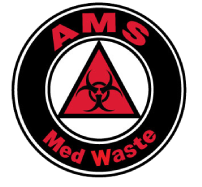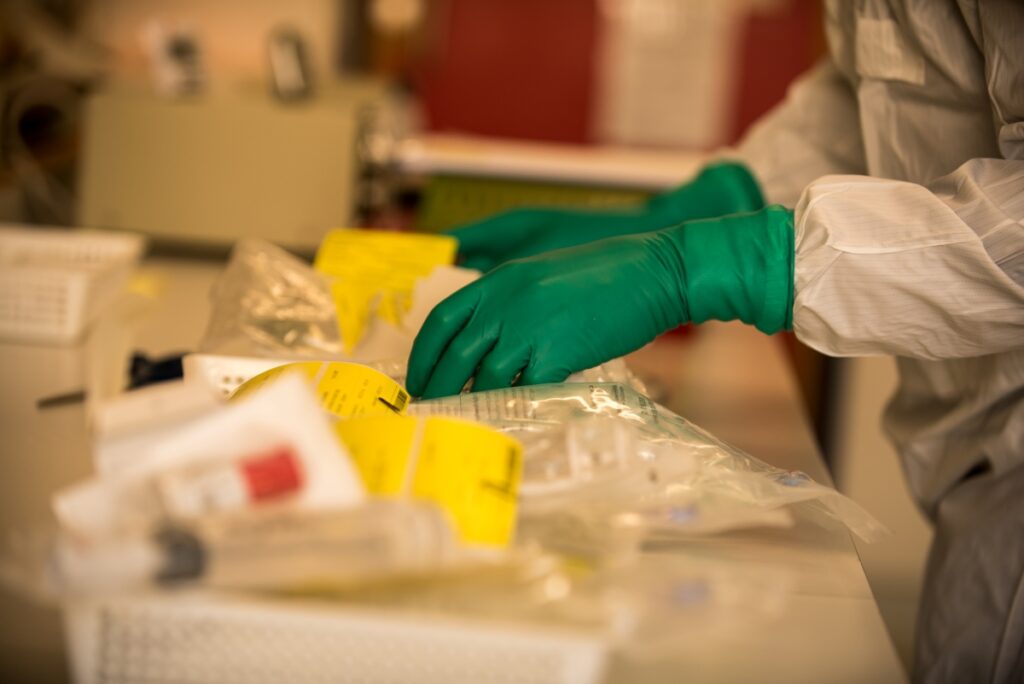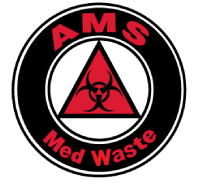Chemotherapy waste is a unique form of medical waste that requires special disposal measures, as these substances have the potential to harm humans and the environment if not handled correctly. It can be challenging for medical centers, hospitals, and other healthcare facilities to determine how to dispose of chemotherapy drugs safely and efficiently. In this blog post, we will explore two types of chemotherapy waste: trace and bulk chemotherapy waste – what they are, what materials they contain, and how they should each be disposed of properly to protect human health and the environment. Keep reading to learn more!
Trace Chemotherapy Waste – What Is It?
Trace chemo waste are materials that contain trace amounts of a chemotherapy agent. This can include vials, syringes, and empty IV bags. The ‘cutoff’ to be considered trace chemotherapy waste and ‘RCRA empty‘ is that no more than three percent (or 0.03) by weight contains the chemotherapy drugs. This is an important distinction, as trace chemo waste can often be disposed of in a regular medical waste container. The yellow container used for hazardous medical waste commonly found at healthcare facilities usually has the words “TRACE CHEMO WASTE” printed on it and is meant exclusively for trace amounts of chemo-drug waste.
Bulk Chemotherapy Waste – What Is It?
Bulk chemo waste, on the other hand, are materials that contain more than a trace amount of chemotherapy drugs. Over three percent (or 0.03) by weight remains and must be managed as hazardous waste. Bulk chemo waste can include items such as infusion bags with residual contents, vials with contents that have not been ultimately used, and IV bags with a residual solution. This type of waste is considered hazardous and must be disposed of properly according to local, state, and federal regulations. The black container (or other designated container) for ‘bulk amounts’ RCRA waste should always be used when disposing of bulk chemo waste.
The Differences between Trace and Bulk Chemotherapy Waste
The most significant difference between trace and bulk chemotherapy waste is the amount of chemo drug that remains in the material. If a material contains more than three percent (or 0.03) by weight of chemotherapy drugs, it must be treated as hazardous waste; if it has less than this, it can be disposed of as regular medical waste. Trace chemotherapy waste is typically disposed of in a yellow container, while bulk chemo waste must be placed in a black or other designated container for RCRA hazardous wastes.
The Proper Disposal of Chemotherapy Waste
It is important to remember that both trace and bulk chemo waste must always be disposed of following local, state, and federal regulations. Trace chemotherapy waste can often be disposed of in a regular medical waste container or the yellow designated “TRACE CHEMO WASTE” container found at healthcare facilities. Bulk chemotherapy waste, however, must be disposed of in a black container (or other designated container) for ‘bulk amounts’ RCRA waste as it is considered hazardous. Healthcare facilities should have a plan in place to properly dispose of chemotherapy drugs and always ensure that their staff is trained on the appropriate protocols.
Convenient Chemotherapy Waste Solutions with AMS MedWaste
AMS MedWaste provides secure and convenient medical waste management solutions for Northern Illinois and Southern Wisconsin healthcare facilities. Our team of professionals specializes in the safe handling, transportation, and disposal of both trace and bulk chemotherapy waste. We understand the importance of following local, state, and federal regulations when managing this unique medical waste. To ensure the safety of our clients and their staff, we provide secure containers for trace chemotherapy waste that can be placed in patient areas or treatment rooms. We provide black containers (or other designated containers) for bulk chemotherapy waste to dispose of hazardous RCRA material properly.
We are dedicated to providing a safe and healthy environment for everyone involved. Our team is highly trained and experienced in handling chemotherapy waste, so you can rest assured that your facility’s waste will be managed properly. Contact us today to learn more about our secure medical waste solutions.






